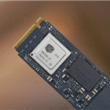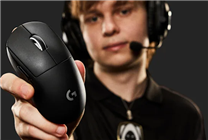Dramatic Surge in DRAM Prices: DDR5 on the Rise
Summary:
- DRAM prices are experiencing significant increases due to strong demand from cloud service providers (CSPs).
- DDR5 is projected to surpass HBM3e profit performance by the first quarter of 2026.
- Market dynamics indicate ongoing price increases for DDR5 through 2026, while HBM3e may see a decline.
In the ever-evolving landscape of memory technology, recent findings by TrendForce highlight an unexpected surge in DRAM prices, primarily driven by heightened demand from global cloud service providers (CSPs). These providers are aggressively expanding their data center capacities, resulting in a sharp uptick in server DRAM contract prices.
Typically wary of price fluctuations, suppliers are now more inclined to increase their quotations. This shift is particularly notable in the realm of DDR5, which continues to escalate in price, rapidly closing the gap with high-bandwidth memory (HBM3e). TrendForce forecasts that by the first quarter of 2026, DDR5 will outstrip HBM3e in terms of profit performance for the first time.
Expected Price Increases
Due to the robust demand, TrendForce has significantly revised its projections for conventional DRAM price increases for the fourth quarter of this year, raising the estimate from 8-13% to a remarkable 18-23%. This upward revision signals that the market may see additional increases as CSPs continue to invest in data centers and high-performance computing architectures to facilitate large-scale model calculations.
Looking forward to 2026, a steady annual growth rate of 4% in server shipments is anticipated, bolstered by CSPs’ ongoing commitment to adopting advanced computing solutions. This expected increase in DRAM capacity for single-machine servers will further fuel overall demand, contributing to a protracted supply shortage across the market.
DDR5 vs. HBM3e: A Competitive Landscape
Supported by escalating server demand, DDR5 contract prices are anticipated to see considerable growth throughout 2026, particularly in the early months. Conversely, competition among the leading manufacturers of HBM3e is intensifying. With buyers maintaining adequate inventory levels, HBM3e prices are expected to dip annually in 2026.
As of the second quarter of 2025, the price disparity between HBM3e and DDR5 remains substantial, estimated at over four times. Although HBM3e continues to deliver better profits to suppliers, the dramatic rise in DDR5 prices is expected to narrow this gap significantly by 2026. TrendForce indicates that a pivotal moment is set to occur in the first quarter of 2026 when DDR5’s profit margins are expected to surpass those of HBM3e.
Market Outlook
Given the intertwined production capacities for HBM3e and DDR5, it is plausible that suppliers will respond to this changing profit structure by increasing the supply of server DDR5, thereby solidifying their profit base. At the same time, as HBM3e prices stabilize amidst persistent demand, suppliers may pursue strategies to enhance the average selling price (ASP) of HBM products to ensure product line profitability.
In summary, the current trends within the DRAM market indicate a significant transformation in pricing dynamics. As DDR5 rises in prominence and profitability, and HBM3e faces competitive pressures, stakeholders must remain agile to navigate this evolving landscape.
With CSPs leading the charge in memory demands and suppliers adjusting their strategies, the DRAM market is poised for notable developments that could redefine profitability and technology adoption in the coming years. As we approach 2026, industry participants should closely monitor these trends to leverage opportunities and mitigate risks.
In conclusion, companies looking to invest in memory technology should stay informed about these trends, especially as the gap between DDR5 and HBM3e narrows and overall demand continues to grow. The strategic decisions made by suppliers in response to these shifts will be crucial for shaping the future of the DRAM market.







